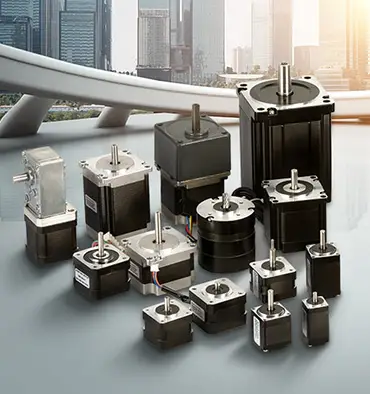How to control rotation of stepper motor?
Stepper motors are electric motors that are designed to rotate in precise increments, or steps, rather than continuously. These motors are widely used in a variety of applications, including CNC routers, 3D printers, and other precision machines. One of the benefits of stepper motors is that they can be easily controlled, which allows for precise and repeatable motion. In this article, we will explore how to control the rotation of a stepper motor and explain the techniques that can be used to do so.
Techniques for Controlling the Rotation of a Stepper Motor
There are several techniques that can be used to control the rotation of a stepper motor. These techniques include:
-
Using a stepper motor controller: The most common method for controlling the rotation of a stepper motor is to use a stepper motor controller. These controllers are specialized devices that are designed to control the operation of stepper motors. They typically include a microcontroller and other hardware components that are required to control the stepper motor. To control the rotation of a stepper motor using a controller, you will need to send commands to the controller that specify the desired rotation of the motor. This can be done using a programming language such as C++ or Python, or using a graphical programming environment such as Scratch or Arduino.
-
Using a motor driver board: Another way to control the rotation of a stepper motor is to use a motor driver board. These driver boards are similar to controller boards, but they do not include a microcontroller. Instead, they rely on an external device, such as a computer or a microcontroller, to provide the necessary control signals to drive the stepper motor. To control the rotation of a stepper motor using a motor driver board, you will need to send control signals to the board that specify the desired rotation of the motor. This can be done using a programming language such as C++ or Python, or using a graphical programming environment such as Scratch or Arduino.
-
Using a computer-controlled motion controller: A third option for controlling the rotation of a stepper motor is to use a computer-controlled motion controller. These controllers are specialized devices that are designed to control the motion of stepper motors and other types of motors. They are typically connected to a computer or a microcontroller, and can be controlled using a program that is written in a programming language such as C++ or Python.
It is important to note that these techniques may not be suitable for all types of stepper motors, and you may need to use a different technique depending on the specific motor you are working with. In addition, it is important to follow proper safety precautions when working with electrical components, such as unplugging the motor and using appropriate personal protective equipment.
In conclusion, there are several techniques that can be used to control the rotation of a stepper motor. These techniques include using a stepper motor controller, a motor driver board, or a computer-controlled motion controller. To control the rotation of a stepper motor, you will need to send commands or control signals to the controller or driver board that specify the desired rotation of the motor. By implementing these techniques, it is possible to achieve precise and repeatable motion with a stepper motor.


Leave a Reply